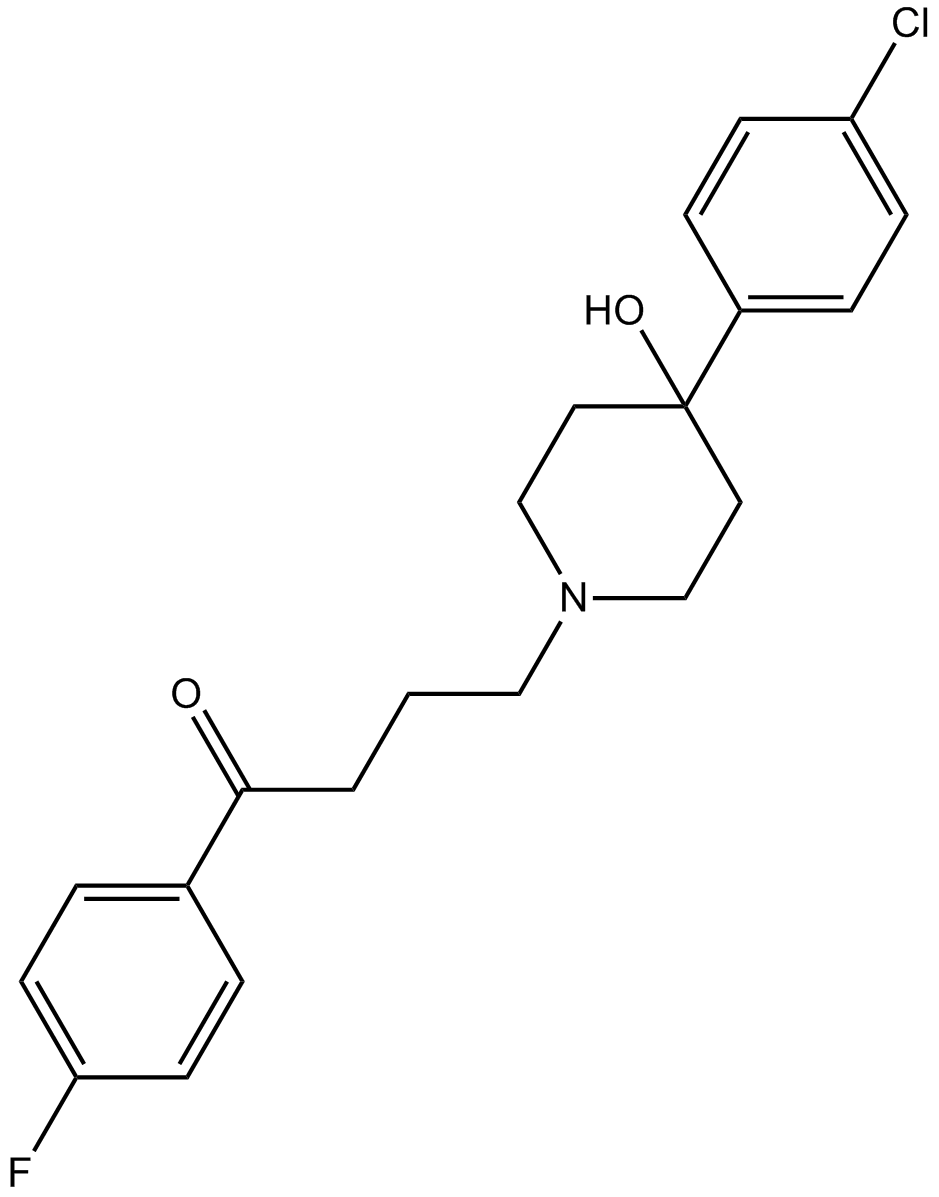Haloperidol (Synonyms: McNJR 1625, NSC 170973, NSC 615296, R 1625) |
| Catalog No.GC17599 |
Antipsychotic drug
Products are for research use only. Not for human use. We do not sell to patients.

Cas No.: 52-86-8
Sample solution is provided at 25 µL, 10mM.
Haloperidol is an antipsychotic drug that has similar actions to the antipsychotic medicine phenothiazine [1].
Haloperidol has been reported to play a role as an inverse agonist of dopamine. In addition, Haloperidol has been found to be highlt potent neuroleptic by relieving nervous through the depression of nerve function. Besides, Haloperidol has shown about 50-fold potency than chiorpromazine, the other antipsychotic drug. Haloperidol has shown beneficial effects in the treatment of delusions and hallucinations. These effects are mainly achieved through blockage of dopamine receptors in the mesocortex and limbic system. Haloperidol has been revealed to prevent the effects of dopamine in the nigrostriatal pathways, which probably explains the associated side effects such as akathisia and dystonias[1].
References:
[1] Dr Ananya Mandal, MD .Haloperidol Pharmacology.
Average Rating: 5 (Based on Reviews and 22 reference(s) in Google Scholar.)
GLPBIO products are for RESEARCH USE ONLY. Please make sure your review or question is research based.
Required fields are marked with *




















